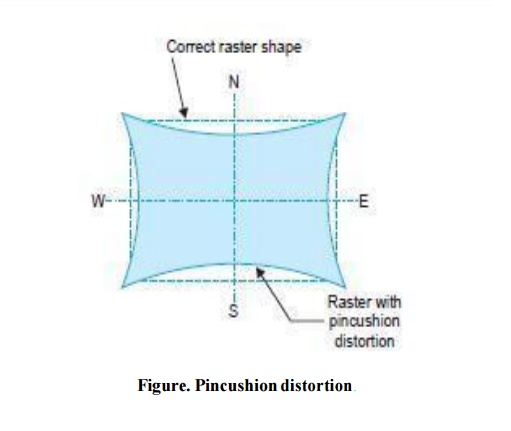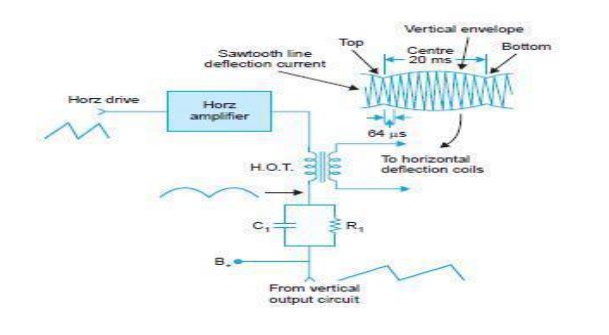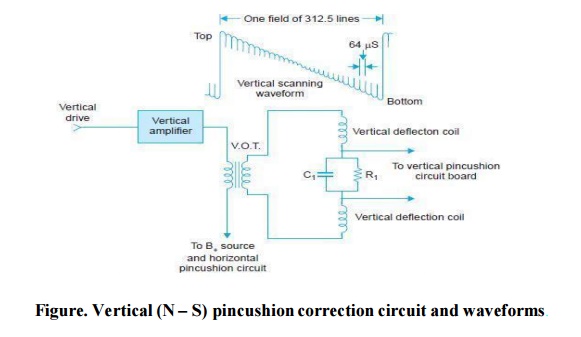Chapter: Television and Video Engineering : Essentials of Color Television
Pincushion Correction Techniques
PINCUSHION CORRECTION TECHNIQUES
As mentioned earlier, dynamic pincushion corrections are necessary in color picture tubes. Figure is the sketch of a raster with a much exaggerated pincushion distortion. The necessary correction is achieved by introducing some cross modulation between the two deflection fields.
E-W Correction To correct E-W (horizontal) pin cushioning, the horizontal deflection sawtooth current must be amplitude modulated at a vertical rate so that when the electron beam is at the top or bottom of the raster, the horizontal amplitude is minimum and when it is at the center of the vertical deflection interval the horizontal sawtooth amplitude is maximum.
To achieve this a parabolic voltage obtained by integrating the vertical sawtooth voltage (network R 1,C 1 in Fig. is inserted in series with the dc supply to the horizontal deflection circuit. As a result, amplitude of individual cycles of the 15625 Hz horizontal output varies in step with the series connected 50 Hz parabolic voltage.
As shown in Fig. (b) The modified horizontal sawtooth wave shape over a period of the vertical cycle (20 ms) has the effect of pulling out the raster at the center to correct E-W pin cushioning.


N-S Correction
The top and bottom or N-S pincushion correction is provided by forcing the vertical sawtooth current to pulsate in amplitude at the horizontal scanning rate. During top and bottom scanning of the raster a parabolic waveform at the horizontal rate is superimposed on the vertical deflection sawtooth.
In fact this increases vertical size during the time the beam is moving through the midpoint of its horizontal scan. The parabolic waveform at the top of the raster is of opposite polarity to that at the bottom since the raster stretch required at the top is opposite to the needed at the bottom.
The amplitude of the parabolic waveform required for top and bottom pincushion correction decreases to zero as vertical deflection passes through the centre of the raster.

Related Topics